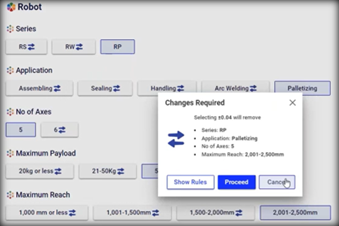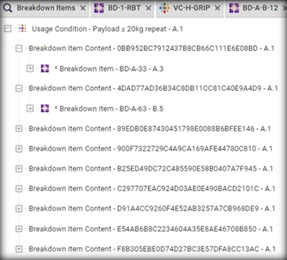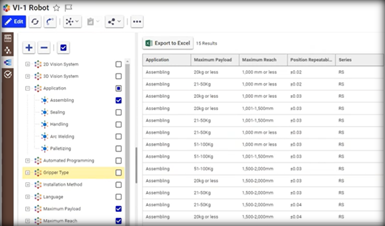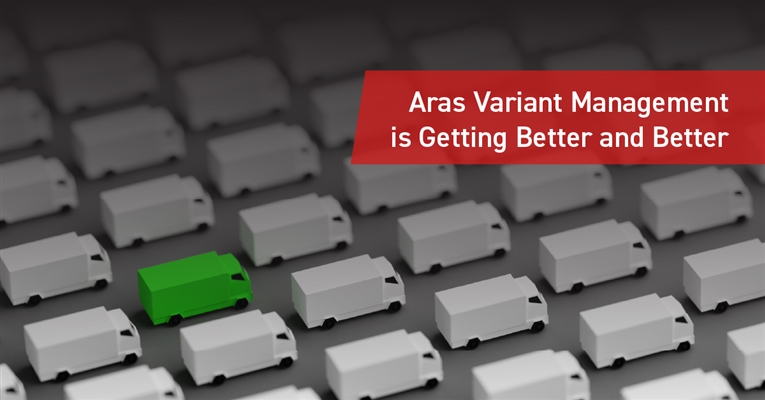A while ago, I wrote a blog on why Variant Management needs to be considered way before 150% BOM (Bill of Materials) is reached for an already-designed product that becomes available. The key to that is the reuse of the variant logic on distinctive design representations, including validation and comparison. That is exactly the architecture of the Aras Variant Management application. The separation between the variability logic and breakdown structure data models enables the use of both in any combination and at any phase of a product’s lifecycle.
Aras has just released a new set of Variant Management application capabilities that are worth commenting on. These features result from collaboration with the application users and their various underlying use cases. Let us have a quick look at each of the new capabilities.
Reusable Selection Sets
The new Selection Set capability allows users to save selected features and options under a unique name and reuse them later to support different use cases. This reduces the underlying 150% breakdown structures to a specific 100% variant of it in which the breakdown structure can be a physical BOM, a functional breakdown, document content, or a complex set of requirements:
- A modified variability logic and/or breakdown structure
- A new variability logic and/or breakdown structure, or
- Any combination of the above
A Selection Set is automatically validated against the variability logic and breakdown structure it applies whenever it is reused. Any conflicts are automatically identified, and the user is provided with interactive guidance on how to resolve them. With an appropriate configuration of the Aras platform, Selection Sets use and change history can be traceable via the product’s digital thread throughout the product lifecycle.

Fig. 1: Validating a named Selection Set in a new context
The ability to reuse a specific configuration of the variability logic offers significant value to the product teams. It reduces errors, improves productivity, and encourages collaboration. This is because once variability logic is defined and validated, multiple users can leverage it in different contexts by selecting any combination of the related features and options when exploring a family of variants.
Reusable Usage Conditions
The new Usage Conditions capability allows us to save each condition under a unique name in order to use and reuse them later on any applicable assets within any breakdown structure. This allows the individual conditions to be defined and validated once, and then used repeatedly in configurations with other Usage Conditions.
Since Usage Conditions identify valid conditions when an asset (such as a part) can be used, the ability to identify them by name enables management and differentiation of global vs. local circumstances. This offers significant benefits when managing supply chain issues or market differentiation. The global condition can now be managed on an enterprise-wide basis, while the local conditions may be specific to a manufacturing plant or geographically narrow market opportunity.

Fig. 2: Identifying structures affected by a named Usage Condition
Named Usage Conditions make change management easier because they are versionable and traceable via the product’s Digital Thread. A good example of that is the where-used analysis service in the Aras platform that allows you to identify every configuration affected by a specific version of a condition or every configuration affected by a change in an existing condition.
Variant Matrix
Maintaining and debugging variability features, options, and rules for a product family is not easy. This is especially true when the separation of the variability logic and breakdown structures affects multiple representations of the product.

Fig. 3: Dynamically generated Variant Matrix
The Variant Matrix capability allows a user to review, validate, and compare multiple variants of multiple breakdown structures in bulk via a single UI (user interface). Since the number of valid combinations can be high, the user can control the scope of their analysis by selecting specific features and options that relate to the analysis. This improves productivity and significantly reduces the time needed to analyze multiple combinations of resolved or proposed variants.
Conclusion
The latest release of the Variant Management application improves users’ productivity and ease of use of the application. This helps manage the increasing complexity of today’s products by maintaining its focus on the various representations throughout the lifecycle of the product’s platform and its variants instead of limiting it to BOM only. To see a demonstration of the application and new capabilities click here. This release is a part of Aras’ ongoing product development process based on a four-month Agile release cycle, with details of each published here. Aras guarantees that all releases are compatible with the local configurations implemented by subscribers.
As with all Aras solutions, upgrading to the latest releases is without risk because Aras guarantees upwards compatibility via no-cost upgrade services for all subscribers. This is true for on-premise and cloud (Aras Enterprise SaaS) deployments.

